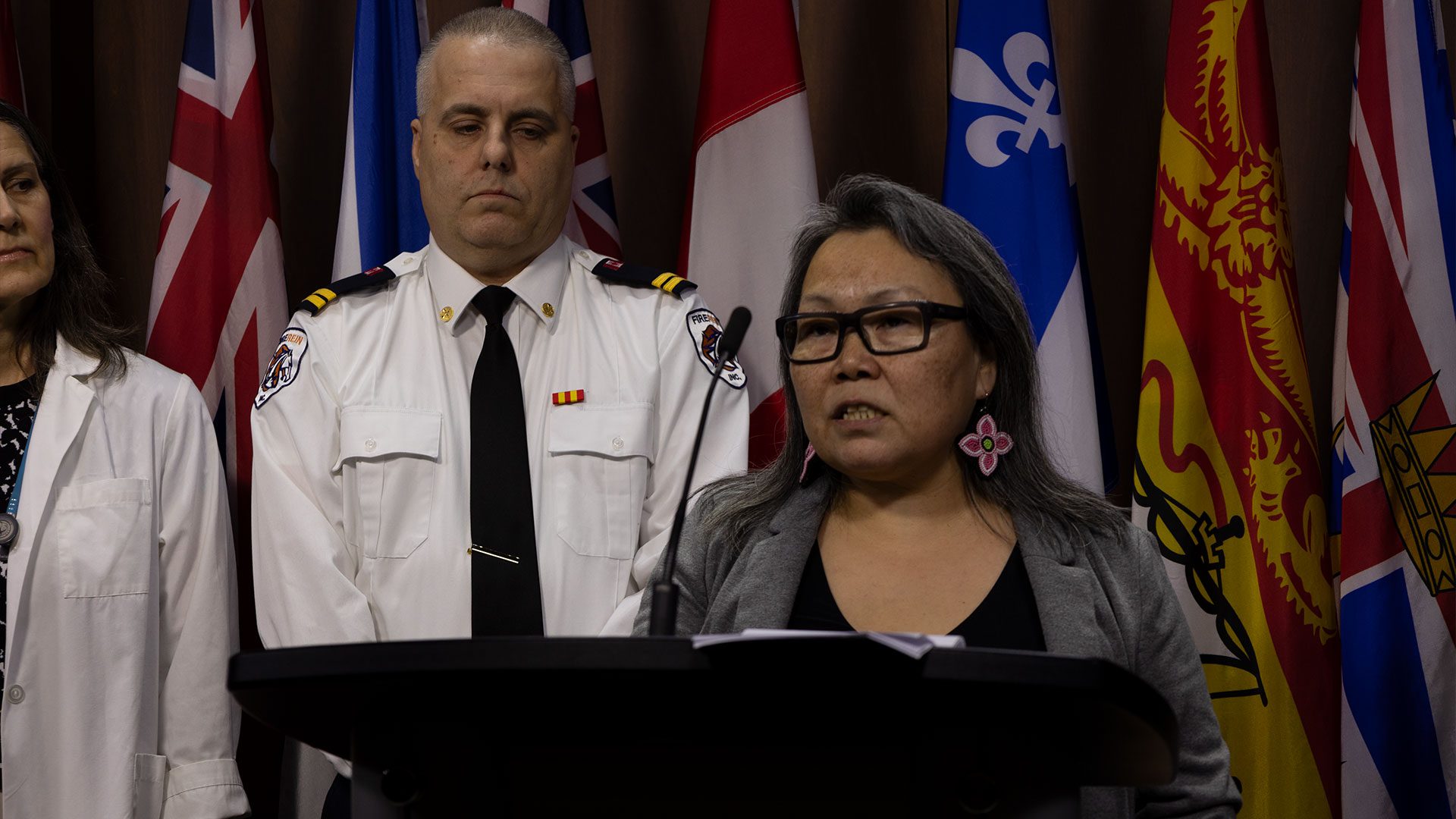NDP Leader Jagmeet Singh says Nutrition North needs an overhaul after seeing APTN Investigates’ episode Food for Profit that examined the program.
“We’d been hearing from people already that live in northern communities that the Nutrition North program wasn’t working,” Singh said on the latest edition of Nation to Nation. “So, we knew that, but we didn’t know how bad things were until we saw the report. The fact that a third of the money that goes towards subsidizing food in the north actually is kept by the food corporations operating in the north was really problematic to me. That shouldn’t be how things work.”
The investigation found that just 67 per cent of every dollar is reaching consumers.
“None of the money should be going towards profits,” Singh told Nation to Nation host, Annette Francis.
According to the federal government, 124 isolated northern communities are eligible for the $134 million NCC subsidy. It covers a list of foods and non-food items such as “diapers, soap, hand sanitizers and personal hygiene products sold by registered retailers, suppliers, country food processors and local food growers. Food banks and charitable organizations are also eligible for the subsidy,” according to the government’s website.
The Nutrition North’s website said the subsidy is “applied against the total cost of an eligible product (including product purchasing cost, transportation, insurance and overhead) shipped by air, ice road, sealift or barge to an eligible community,” meaning, “the price you pay for these items is cheaper than it otherwise would be, and reduces the cost for charitable organizations to donate food to isolated communities.
“For profit businesses must pass on the full subsidy to consumers,” the Nutrition North Canada website says.
However, the APTN investigation reported that this wasn’t the case. According to a report published in the Journal of Public Economics in October 2023, dozens of eligible communities were analyzed between 2016 and 2019 and found that the subsidy was not being fully passed on to consumers to make groceries cheaper.
“The amount of subsidy that was being translated into lower [grocery] prices were 67 cents on the dollar,’ said Tracey Galloway, a professor at the University of Toronto and co-author of the report.
For communities with only one grocery store, the researchers found that the subsidy pass-through was even lower.
“If there was no competition, not another store in the community, the pass-through was 58 cents,” she said.
Singh asked Northern Affairs Minister Dan Vandal about the issue during question period on Feb. 26. Vandal said his government is “absolutely committed to ensuring 100 per cent of the Nutrition North retail subsidy is passed on directly to northerners.”
But Singh is not convinced.
“He’s not,” he said. “They’re not committed to that because if they were committed then Nutrition North wouldn’t be given so much subsidies that end up staying with the company, instead of going to the people. A third of the money, that is, that’s serious.”
In a follow-up email to APTN News, a spokesperson in Vandal’s office said the minister is “aware of recent reports that find the retail subsidy is not fully being passed onto consumers.”
“Nutrition North Canada is frequently audited to ensure compliance with several internal and external reviews having already taken place. Upon review of the report’s findings, we are prepared to order an external audit if necessary.”
Call for a ban on ‘forever chemicals’

On Wednesday, a group made up of scientists, Indigenous health experts, environmentalists and firefighters called on the federal government for a complete ban on Poly-fluoroalkyl Substances (PFAS), also known as “forever chemicals.”
These chemicals are commonly used for consumer products, on non-stick cookware, diapers, waterproof textiles and coatings on electronics. According to Grey, Indigenous communities in the north are affected the most contamination by PFAS.
“They don’t break down easily, so they end up in the arctic long-range transport or through the grasshopper effect and when they get to the arctic, because it’s so cold, they stay there and once they stay there, they get in the food web and then they start bio accumulating,” said Lucy Grey, a public health Inuit research advisor with the Nunavik Regional Board of Health and Social Services.
Research has found that there is a higher level of exposure of PFAS amongst Inuit and we are even finding them in infants showing that mothers are offloading some of these chemicals onto their baby.
The battle over baby eels
Nation to Nation also dipped its net into the elvers fishery in Atlantic Canada, which could be shut down once again. Elvers are baby eels, or glass eels, that are sold to Asian markets, where they are grown to adulthood for food.
It’s a lucrative fishery. Last year, Six Wolastoquey communities in New Brunswick were allotted a catch of 750 kilograms of elvers. A kilogram is worth approximately $5,000 per kilogram.
The Department of Fisheries and Oceans (DFO) eventually shut it down last April due to over fishing and reports of violence. It is considering a shut down once again.
Chief Ross Perley from the Neqotkuk (Tobique First Nation) told Nation to Nation that, so far, there has been no consultation between his community and DFO.
“They wanted us to consult on regulations, we didn’t feel that consulting on regulations should go before discussions on the quota that we would receive. Our position was that we should discuss quota first, before we talk about consultations on regulations that they want to impose,” he said.
“Our issue, and it’s always been, is that the fishery, in its current state, is equitable between non-Indigenous commercial license holders and Indigenous rights holders.”
Perley said the overall catch for elvers is around 9,600 kg.
“You can do the math on that, it’s not a fair share. A fair share would be 50% across-the-board to include all Indigenous fisherman.”











